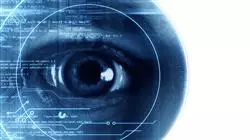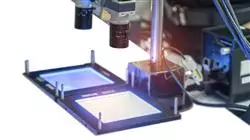University certificate
The world's largest artificial intelligence faculty”
Introduction to the Program
You will master the main types of CNN layers and identify larger portions of the images thanks to this 100% online program"

Convolutional Networks have established themselves as a versatile tool in the field of Computer Vision. Its importance lies in its ability to analyze, understand and process images or videos in an automated and efficient way. Among the diversity of its applications, it stands out its relevance in Biomedical Authentication by analyzing unique facial characteristics of a person and comparing them with a database to verify their identity. This is indispensable in aspects such as airport security or access control in buildings, among others.
In this context, TECH is developing a Postgraduate diploma that will comprehensively address Deep Learning Applied to Computer Vision. The curriculum will delve into the use of Machine learning, given its importance to recognize patterns and perform specific analysis tasks. Likewise, the syllabus will address the whole cycle of creation of a Neural Network, paying careful attention to its learning and validation. On the other hand, students will learn the most advanced strategies for Object Detection and Tracking. In line with this, they will implement cutting-edge evaluation metrics, including the Intersection Over Union or Confidence Score.
On the other hand, to strengthen the mastery of the contents, this university program applies the revolutionary Relearning system. TECH is a pioneer in the use of this teaching model, which promotes the assimilation of complex concepts through their natural and progressive reiteration. In this way, students do not have to resort to complex techniques such as traditional memorization. In this line, the program also uses materials in various formats such as infographics, interactive summaries or explanatory videos. All this in a convenient 100% online mode, which allows students to adjust their schedules according to their responsibilities and personal circumstances.
Delve deeper into the Evaluation Metrics of Tracking Algorithms thanks to TECH, the world's best digital university according to Forbes"
This Postgraduate diploma in Deep Learning Applied to Computer Vision contains the most complete and up-to-date program on the market. The most important features include:
- The development of case studies presented by experts in Deep Learning, computer science and computer vision
- The graphic, schematic, and practical contents with which they are created, provide scientific and practical information on the disciplines that are essential for professional practice
- Practical exercises where the self-assessment process can be carried out to improve learning
- Its special emphasis on innovative methodologies
- Theoretical lessons, questions to the expert, debate forums on controversial topics, and individual reflection assignments
- Content that is accessible from any fixed or portable device with an Internet connection
Do you want to become a Machine Learning expert? Achieve it in only 6 months with this innovative program"
The program’s teaching staff includes professionals from the industry who contribute their work experience to this program, as well as renowned specialists from leading societies and prestigious universities.
The multimedia content, developed with the latest educational technology, will provide the professional with situated and contextual learning, i.e., a simulated environment that will provide immersive education programmed to learn in real situations.
This program is designed around Problem-Based Learning, whereby the professional must try to solve the different professional practice situations that arise during the academic year For this purpose, the students will be assisted by an innovative interactive video system created by renowned and experienced experts.
Update your knowledge in Object Detection through innovative multimedia content"

Forget about memorizing! With the Relearning system you will integrate the concepts in a natural and progressive way"
Why study at TECH?
TECH is the world’s largest online university. With an impressive catalog of more than 14,000 university programs available in 11 languages, it is positioned as a leader in employability, with a 99% job placement rate. In addition, it relies on an enormous faculty of more than 6,000 professors of the highest international renown.

Study at the world's largest online university and guarantee your professional success. The future starts at TECH”
The world’s best online university according to FORBES
The prestigious Forbes magazine, specialized in business and finance, has highlighted TECH as “the world's best online university” This is what they have recently stated in an article in their digital edition in which they echo the success story of this institution, “thanks to the academic offer it provides, the selection of its teaching staff, and an innovative learning method aimed at educating the professionals of the future”
A revolutionary study method, a cutting-edge faculty and a practical focus: the key to TECH's success.
The most complete study plans on the university scene
TECH offers the most complete study plans on the university scene, with syllabuses that cover fundamental concepts and, at the same time, the main scientific advances in their specific scientific areas. In addition, these programs are continuously being updated to guarantee students the academic vanguard and the most in-demand professional skills. In this way, the university's qualifications provide its graduates with a significant advantage to propel their careers to success.
TECH offers the most comprehensive and intensive study plans on the current university scene.
A world-class teaching staff
TECH's teaching staff is made up of more than 6,000 professors with the highest international recognition. Professors, researchers and top executives of multinational companies, including Isaiah Covington, performance coach of the Boston Celtics; Magda Romanska, principal investigator at Harvard MetaLAB; Ignacio Wistumba, chairman of the department of translational molecular pathology at MD Anderson Cancer Center; and D.W. Pine, creative director of TIME magazine, among others.
Internationally renowned experts, specialized in different branches of Health, Technology, Communication and Business, form part of the TECH faculty.
A unique learning method
TECH is the first university to use Relearning in all its programs. It is the best online learning methodology, accredited with international teaching quality certifications, provided by prestigious educational agencies. In addition, this disruptive educational model is complemented with the “Case Method”, thereby setting up a unique online teaching strategy. Innovative teaching resources are also implemented, including detailed videos, infographics and interactive summaries.
TECH combines Relearning and the Case Method in all its university programs to guarantee excellent theoretical and practical learning, studying whenever and wherever you want.
The world's largest online university
TECH is the world’s largest online university. We are the largest educational institution, with the best and widest online educational catalog, one hundred percent online and covering the vast majority of areas of knowledge. We offer a large selection of our own degrees and accredited online undergraduate and postgraduate degrees. In total, more than 14,000 university degrees, in eleven different languages, make us the largest educational largest in the world.
TECH has the world's most extensive catalog of academic and official programs, available in more than 11 languages.
Google Premier Partner
The American technology giant has awarded TECH the Google Google Premier Partner badge. This award, which is only available to 3% of the world's companies, highlights the efficient, flexible and tailored experience that this university provides to students. The recognition as a Google Premier Partner not only accredits the maximum rigor, performance and investment in TECH's digital infrastructures, but also places this university as one of the world's leading technology companies.
Google has positioned TECH in the top 3% of the world's most important technology companies by awarding it its Google Premier Partner badge.
The official online university of the NBA
TECH is the official online university of the NBA. Thanks to our agreement with the biggest league in basketball, we offer our students exclusive university programs, as well as a wide variety of educational resources focused on the business of the league and other areas of the sports industry. Each program is made up of a uniquely designed syllabus and features exceptional guest hosts: professionals with a distinguished sports background who will offer their expertise on the most relevant topics.
TECH has been selected by the NBA, the world's top basketball league, as its official online university.
The top-rated university by its students
Students have positioned TECH as the world's top-rated university on the main review websites, with a highest rating of 4.9 out of 5, obtained from more than 1,000 reviews. These results consolidate TECH as the benchmark university institution at an international level, reflecting the excellence and positive impact of its educational model.” reflecting the excellence and positive impact of its educational model.”
TECH is the world’s top-rated university by its students.
Leaders in employability
TECH has managed to become the leading university in employability. 99% of its students obtain jobs in the academic field they have studied, within one year of completing any of the university's programs. A similar number achieve immediate career enhancement. All this thanks to a study methodology that bases its effectiveness on the acquisition of practical skills, which are absolutely necessary for professional development.
99% of TECH graduates find a job within a year of completing their studies.
Postgraduate Diploma in Deep Learning Applied to Computer Vision
At TECH Global University, we present you our exceptional Postgraduate Diploma in Deep Learning Applied to Computer Vision, belonging to the School of Artificial Intelligence. This academic proposal represents a unique opportunity to delve into the fascinating world of deep learning and its practical application in visual processing. Through online classes, you will explore in depth the fundamentals of deep learning, highlighting convolutional neural networks and their crucial role in computer vision. This graduate program is designed for professionals and students who wish to acquire specialized knowledge and advanced skills in the field of artificial intelligence. We provide a comprehensive perspective, addressing algorithm development, visual pattern recognition and practical applications of these technologies. Through our hands-on approach, participants will have the opportunity to apply their knowledge in real projects, preparing them for challenges in the professional world.
Acquire key skills in Artificial Intelligence
At TECH Global University, we are proud to have a faculty of experts in artificial intelligence and deep learning, committed to providing high-quality education. Our interactive approach in online classes encourages participation and collaboration among students, creating a virtual community that enriches the learning experience. Upon successful completion of the program, graduates will earn a Postgraduate Diploma in Deep Learning Applied to Computer Vision, endorsed by the world's best online university. This certificate not only validates your skills, but also puts you in a prime position to take advantage of emerging career opportunities in the field of artificial intelligence and computer vision. If you're ready to take a step forward in your career and explore the limitless possibilities of artificial intelligence, this postgraduate program is the ideal path for you. Join TECH Global University and transform your future with cutting-edge knowledge and a unique perspective at the largest School of Artificial Intelligence.







